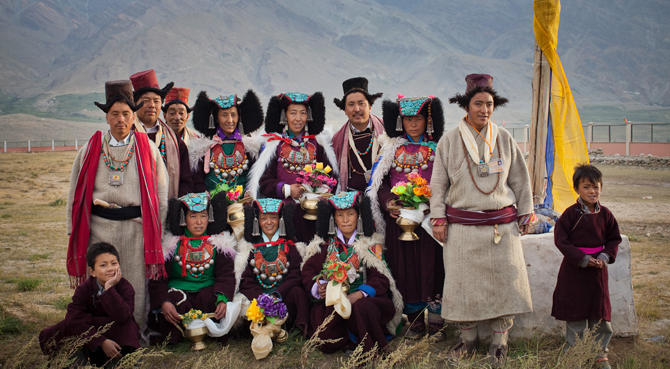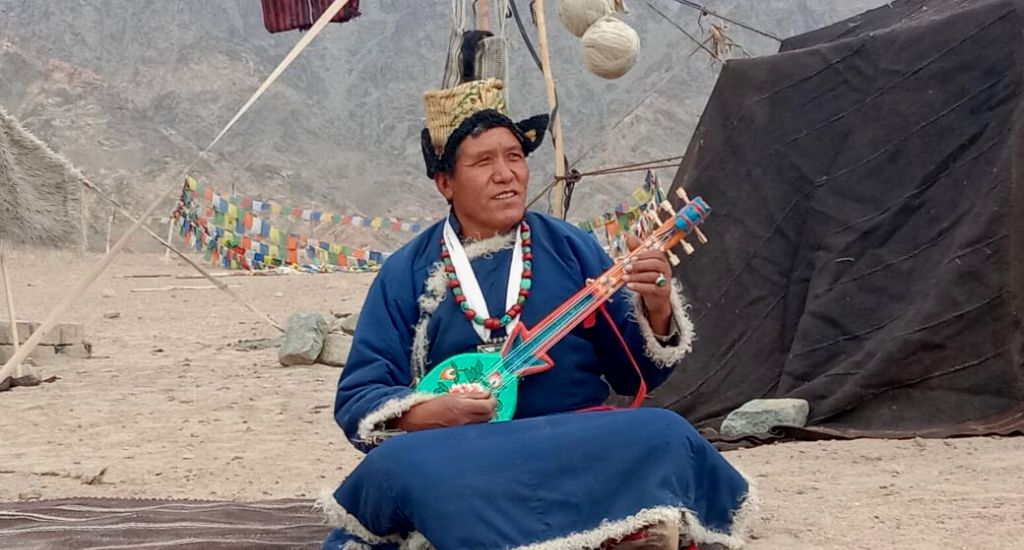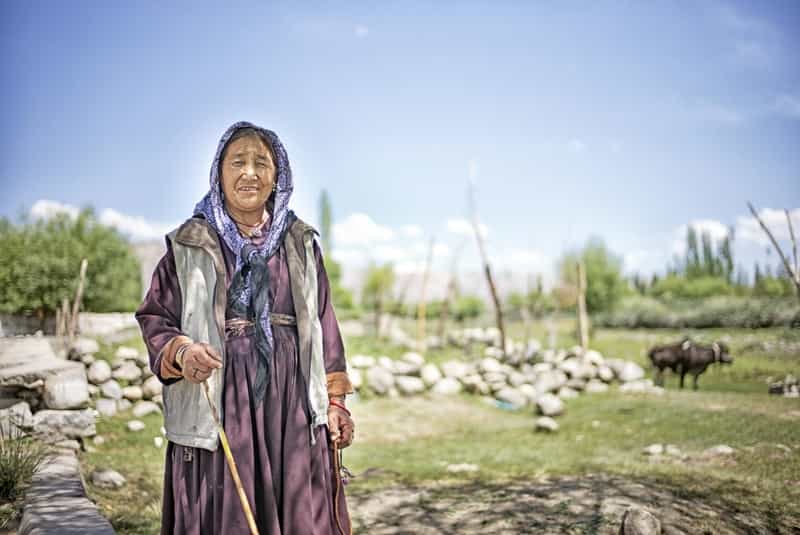The culture of Ladakh refers to the traditional customs, belief systems, and political systems that are followed by Ladakhi people in India. The languages, religions, dance, music, architecture, food, and customs of the Ladakh region are similar to neighboring Tibet. Ladakhi is the traditional language of Ladakh. The popular dances in Ladakh include the khatok chenmo, cham, etc. The people of Ladakh also celebrate several festivals throughout the year, some of the me Hemis Tsechu and Losar.
Background
 Ladakh is the northmost part of India. Ladakh shares a border with Tibet to the east, the Indian state of Himachal Pradesh and the union territory of Jammu and Kashmir to the south, and Gilgit-Baltistan to the west. It extends from the Siachen Glacier in the Karakoram range in the north to the Great Himalayas to the south. Formerly, it was a part of the Indian state of Jammu and Kashmir, but after the Jammu and Kashmir Reorganisation Act (2019), it was separated from Jammu and Kashmir and was converted to a Union Territory. Parts of Ladakh have been the subject of dispute between India, Pakistan, and China since 1947.
Ladakh is the northmost part of India. Ladakh shares a border with Tibet to the east, the Indian state of Himachal Pradesh and the union territory of Jammu and Kashmir to the south, and Gilgit-Baltistan to the west. It extends from the Siachen Glacier in the Karakoram range in the north to the Great Himalayas to the south. Formerly, it was a part of the Indian state of Jammu and Kashmir, but after the Jammu and Kashmir Reorganisation Act (2019), it was separated from Jammu and Kashmir and was converted to a Union Territory. Parts of Ladakh have been the subject of dispute between India, Pakistan, and China since 1947.
Ladakh incorporates parts of the Himalayan and Karakoram mountain ranges and the upper Indus River valley. It is the only cold desert in India. Its topography is barren and population sparse inhabited along the river banks of different valleys namely Indus, Nubra, Changthang, and Zanskar. Women in Ladakh enjoy high status in comparison to rest of the nation, especially rural areas. Ladakh's languages, religions, dance, music, architecture, food, and customs are similar to neighboring Tibet.
Language
The Ladakhi language is a Tibetic language spoken in Ladakh, which is also called Bhoti or Bodhi. As per the 2011 census, approximately 110,826 people speak Ladakhi. Ladakhi has absorbed words from the silk route trade. It is usually written using Tibetan script with the pronunciation of Ladakhi being much closer to written Classical Tibetan.
Music
 The traditional music of Ladakh includes instruments like linyu (flute), damnyan (stringed instrument) pivang, khakong, (sitar) daph (dafli) daman, surna, and piwang (shehnai and drum). Chanting of mantras in Sanskrit and the Tibetan language plays an important role in Ladakhi music. Folk music is an integral part of Ladakh's culture. Music is often inspired by the surrounding physical features. Morup Namgyal is an avid preservationist and during his 30-year career working at Ladakh's only radio station (All India Radio, Leh) he recorded a vast archive of Ladakhi folk songs.
The traditional music of Ladakh includes instruments like linyu (flute), damnyan (stringed instrument) pivang, khakong, (sitar) daph (dafli) daman, surna, and piwang (shehnai and drum). Chanting of mantras in Sanskrit and the Tibetan language plays an important role in Ladakhi music. Folk music is an integral part of Ladakh's culture. Music is often inspired by the surrounding physical features. Morup Namgyal is an avid preservationist and during his 30-year career working at Ladakh's only radio station (All India Radio, Leh) he recorded a vast archive of Ladakhi folk songs.
Dance
 The popular dances in Ladakh include the Khatok Chenmo which is headed by a respectable family member, Shondol, Some other dance forms include Kompa Tsum-tsak Jabro Chaams: Chabs-Skyan Tses Raldi Tses and Alley Yaato.[15] The music of Ladakhi monastic festivals, like various forms of Tibetan music, often involves chanting as an integral part of the religion. Traditionally, 360 variants of dances existed in the early times, but today only a few are preserved. These chants are complex, often recitations of sacred texts and manuscripts or in celebration of different festivals. Some forms of dance narrate the story of the fight between good and evil, ending with the eventual victory of the former.
The popular dances in Ladakh include the Khatok Chenmo which is headed by a respectable family member, Shondol, Some other dance forms include Kompa Tsum-tsak Jabro Chaams: Chabs-Skyan Tses Raldi Tses and Alley Yaato.[15] The music of Ladakhi monastic festivals, like various forms of Tibetan music, often involves chanting as an integral part of the religion. Traditionally, 360 variants of dances existed in the early times, but today only a few are preserved. These chants are complex, often recitations of sacred texts and manuscripts or in celebration of different festivals. Some forms of dance narrate the story of the fight between good and evil, ending with the eventual victory of the former.
Lifestyle of the People of Ladakh
 A peaceful and calm lot, the people of Ladakh are proud of their rich culture. They never miss an opportunity to celebrate their culture, rooted in history.
Whether it is in their daily lifestyle or during a festival, they always celebrate with enthusiasm.
A peaceful and calm lot, the people of Ladakh are proud of their rich culture. They never miss an opportunity to celebrate their culture, rooted in history.
Whether it is in their daily lifestyle or during a festival, they always celebrate with enthusiasm.
Most of the people are farmers and rely on agriculture for their income. A fair section of the people does rely on tourism, their income is seasonal. This means, that they earn a fair chunk of their income only during the tourist season that is from April to July.
In a few parts of Ladakh, especially near the mountain regions, sheep rearing is an important profession.

